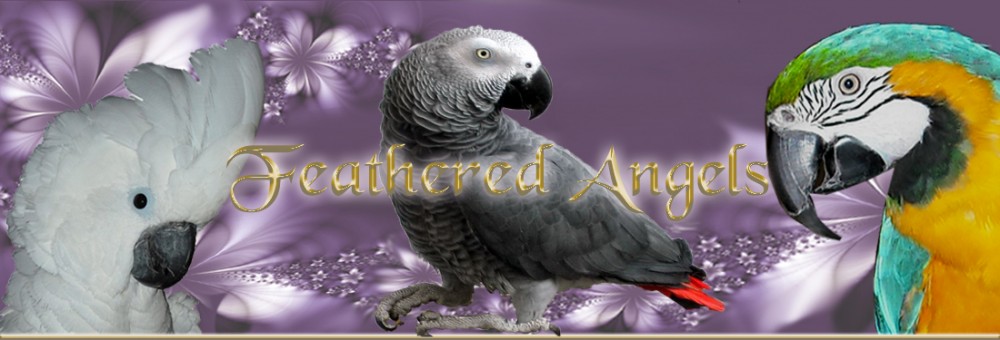Intelligent and complex birds often suffer from isolation, boredom, and neglect
All Animals magazine, March/April 2013
 Rescued from a hoarder, this parrot had pulled out all his feathers. Such self-mutilation is common in birds unable to engage in natural behaviors. Kathy Milani/The HSUS
Rescued from a hoarder, this parrot had pulled out all his feathers. Such self-mutilation is common in birds unable to engage in natural behaviors. Kathy Milani/The HSUS
by Charles Bergman
She embodied all the magic and the misery of modern parrots.
Sofia popped off her perch, climbed up my arm, and leaned into my face. A Moluccan cockatoo, among the world’s most stunning birds, Sofia’s most distinctive feature is her huge round head—big, white, and inviting as a fluffy pillow. She fanned her crest in a spectacular blush of pink, coral, and salmon.
I looked into Sofia’s black eyes and held her close. As she dropped her head and burrowed in tight, I was overcome by the intimacy of the moment, like cuddling a baby.
“They can really turn on the charm,” says Betsy Lott, smiling.
That combination of beauty and charm has helped make parrots like Sofia the fourth most popular pet in America—behind only dogs, cats, and the ubiquitous freshwater fishes.
But there’s a dark side to our passion for parrots, and Sofia embodied that too. Once an elegant bird in white feathers, she’s now a tattered beauty, her feathers ragged and her chest plucked bare, showing a big patch of wrinkled pewter gray skin.
Sofia’s good friend and perch mate, Mango, wears a cone-shaped collar to keep her from even more aggressive self-mutilation. Only captive parrots pluck and wound themselves like this.
“I get calls every day from people looking to dump their parrots,” Lott says.
The owners of these parrots finally gave up on them and placed them in Mollywood, Lott’s home-based organization for surrendered parrots. (The name refers to Moluccan cockatoos, one of the most spectacular—and difficult to care for—of all parrot species.) They’re two of about 350 parrots she and her husband tend to just outside of Bellingham, Wash., near the Canadian border.
“I get calls every day from people looking to dump their parrots,” Lott says.
Sofia and Mango represent a category of parrot that’s grown over the last 20 years: the unwanted, abandoned, and disposable bird. In 1992, the Wild Bird Conservation Act made it illegal to import most wild-caught parrots into the United States. While a victory for wildlife conservation, it fueled a captive breeding boom of unprecedented proportions.
Once, parrots were icons of the tropical good life. Now they have morphed into figures of increasing controversy and crisis. The truth is, most pet parrots are only a few generations removed from the wild, and few owners are prepared to fulfill even their most basic instincts: flying, flocking, and finding mates. These highly social creatures are usually kept alone and rarely allowed to fly—many parrots’ wings are clipped. Often their relatively small cages have little in the way of stimulation and “enrichment,” or toys. For an animal as emotionally complex as a chimpanzee or dolphin, it amounts to an unimaginably bleak existence. In fact, parrot advocate Mira Tweti estimates that some 75 percent of birds “live a life of abuse or neglect.”
With no outlet for the chronic frustration of living in an environment expressly unsuited to them, these intelligent creatures often develop destructive behaviors like screaming, aggression to their owners, and the self-mutilation that Sofia and Mango have displayed.
Understandably, all of this takes a toll on birds’ owners. Often the human caretakers feel out of their depth, similarly frustrated, and even guilty about the daily trial of living with an animal who is traumatized and psychologically damaged—and who may outlive them by decades.
Some resort to confining their birds to the closet, basement, or garage, where the dark silences them and hides the mess. Other owners simply unload their high-maintenance charges with friends or family members (many parrots pass through multiple homes in their lifetimes) or at places like Mollywood, which have sprouted up like mushrooms in response to the fallout.
“People just don’t realize what they’re getting into,” Lott says.
This is the paradox of parrots. We love them for being like us. … But then we find ourselves unprepared for the challenges.
This is the paradox of parrots. We love them for being like us, for talking like us, and for bonding with us. But then we find ourselves unprepared for the challenges they present in our busy lives.
The problem is so large that Tweti, Lott and other rescuers, and organizations such as The HSUS don’t recommend parrots as pets in the first place. Because they are so long-lived, there will likely be a need for responsible, carefully vetted home care for many birds for many years. But the best situation for most, these groups maintain, is an accredited sanctuary environment.
Sofia nudges me with her head, and I rub the back of her neck. She’s one of many such parrots—literally hundreds—I’ve met in rescues and sanctuaries around the country. They became my inspiration to try to figure out what’s really happening to their kind and what that means for our rapidly changing relationship. What is clear is that there’s misery in parrot land.
While I soak up the love from Sofia, several other parrots in the house start screaming. I can barely hear Lott.
“These parrots are like people—like children,” she says. “It’s like adopting a 2-year-old special needs child. One that will never grow up.”
original articleNo-Fly Zone: Denied Their Natural Habits, Millions of Pet Parrots Lead Bleak, Lonely Lives
